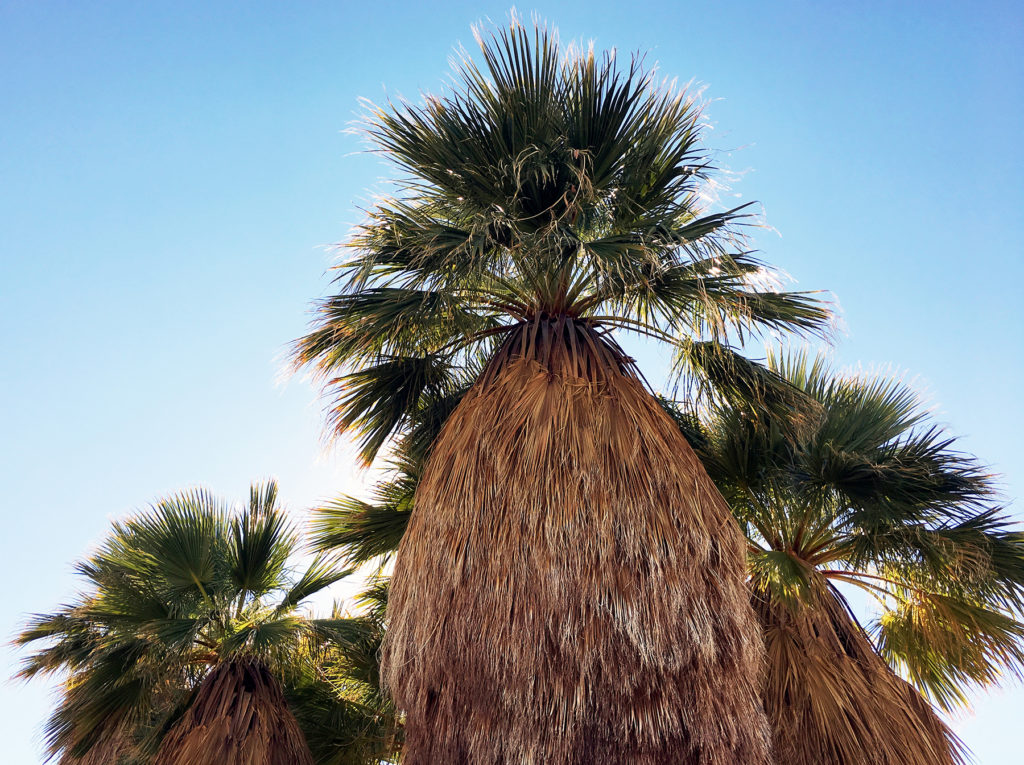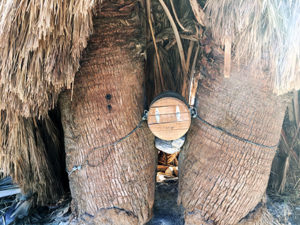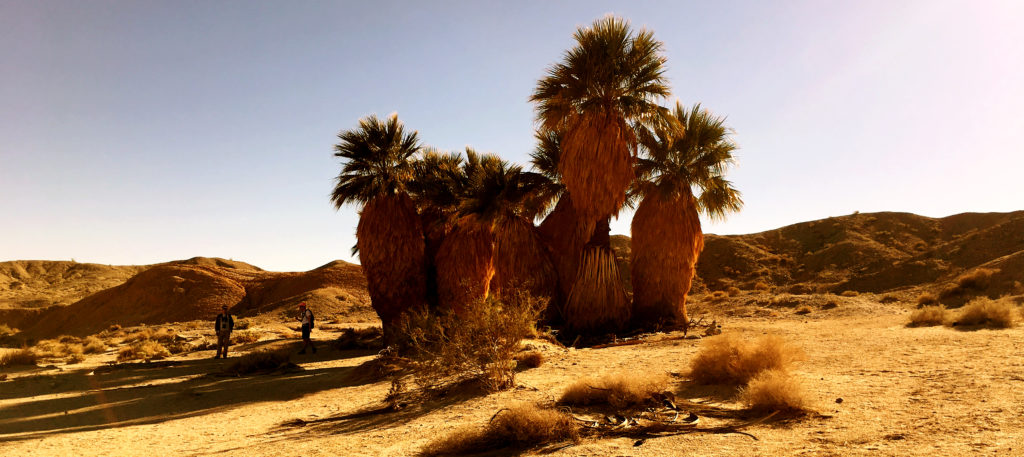
I had the pleasure Saturday to visit an oasis in the badlands of Anza-Borrego Desert State Park. Anza-Borrego Foundation sponsored a tour for members of the ABF’s Century Circle, major donors to the foundation, and I was able to join the tour.
In a caravan of four-wheel-drive vehicles, the two dozen+ participants first visited 17 Palms Oasis, 15-20 miles east of “downtown” Borrego Springs, near the eastern edge of the park. This is a naturally occurring collection of California fan palms, the only palm tree native to the western United States. The name is based on the number of palm trees present, though that number has fluctuated through the years. At least a couple of people counted 18 palms. Other oases in the park are called 5 Palms and Una Palma.
The palms exist there because conditions permit it. They are close to a wash, so water from occasional and sometimes heavy rains can nourish them. Water as well exists in aquifers beneath them.

These oases are the proverbial water holes that sustain animal life and, in years and millenia past, humans. Attracting travelers, the oasis also was a variant of a post office. A “desert mailbox” has been located at 17 Palms since the late 1800s. People could leave letters and messages in it, requesting that someone passing through carry it to its destination or to a closer “desert mailbox.” The current such mailbox, wedged between two palms, holds journals in which visitors to the oasis can leave comments and thoughts.
Later, we moved on to Vista del Malpais. “Mailpais” is Spanish for “badland.” From this vantage point, one can look out for miles over the badlands. Here are two such views.
Of course, even near the badlands, there can be vegetation. These ocotillos were at Vista del Malpais.
There are expectations for a great desert wildflower season in the spring. Crossing our fingers!




